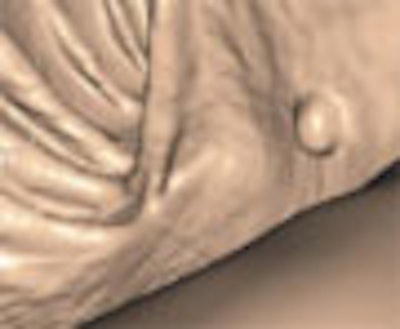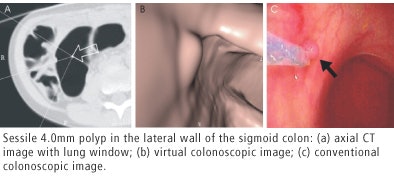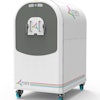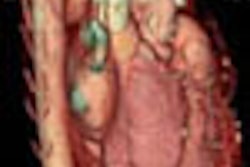
In what may be the first peer-reviewed study of virtual colonoscopy in children, researchers from Diagnóstico Maipu in Buenos Aires have produced high sensitivity and specificity with a low-dose VC protocol, compared to optical colonoscopy.
"VC will be a useful diagnostic technique in the detection of elevated colonic lesions or oncological diseases, allowing for less aggressive follow-up in these patients," concluded Dr. Carlos Capuñay, Dr. Patricia Carrascosa, and colleagues in the July 5 online edition of the European Journal of Radiology.
The study sought to determine VC's sensitivity and specificity for detecting elevated lesions in children, and compare the results to conventional colonoscopy. Over three years, 100 patients (81 girls and 19 boys, mean age 6), all presenting with rectal bleeding, were evaluated by virtual and conventional colonoscopy.
"Patients with other colonic symptoms such as rectal pain, abdominal distension, abdominal pain, and diarrhea were excluded, and sexual abuse was carefully ruled out," the authors wrote.
A day before the exam, all patients received age- and size-appropriate doses of a phosphosoda preparation for colonic lavage. On exam day the patients underwent manual colonic distension with room air, followed by a scout CT to assess the adequacy of the distension.
"A small-gauge soft-latex cannula (a modified bladder one) was used in patients under 10 years old, or a thin rectal tube was introduced into the rectum to insufflate room air into the colon," the radiologists wrote.
Then prone and supine CT images were acquired on a multislice Mx8000 scanner (Philips Medical Systems, Andover, MA) using 3.2-mm collimation, 1.6-mm reconstruction interval, 15-30 mAs, and 0.5-second rotation time, for an acquisition time of eight to 12 seconds depending on the patient's size. The images were transferred to a Philips MxView workstation and evaluated in 2D mode using the lung window or multiplanar reconstructions, as well as 3D volume-rendering reconstructions and 3D endoluminal views.
Readers examining conventional colonoscopy exams or VC results were blinded to the results of the other exam, Capuñay and colleagues wrote. The search targets, elevated lesions, were defined as focal 2-mm or larger wall irregularities projecting into the colonic lumen.
No complications resulted from any of the exams, and the researchers concluded that nearly half (48/100) the patients had no colorectal lesions. Rectal bleeding was finally attributed to constipation (n = 35), internal hemorrhoids (n = 5), and external hemorrhoids (n = 8) in these cases.
Among the 52 patients with colorectal lesions, VC detected 86 lesions compared to 80 for conventional colonoscopy. The VC results included 48 true negatives, 12 false positives, and eight false negatives. Histopathology found 79 hamartomous juvenile polyps and one adenomatous polyp with low-grade dysplasia.
The overall results for sensitivity, specificity, positive predictive value (PPV), and negative predictive value (NPV) at 95% CI, as well as the results for different lesion sizes, are shown below.
|
"VC has well-known advantages compared with a barium enema, one of the diagnostic tools used for evaluating pediatric colonic disease," the group wrote. "This is due to its shorter time of examination, and a better patient tolerance due to only insufflation of room air without barium contrast. Furthermore, the radiation dose is lower and this procedure also detects extracolonic lesions."
 |
 |
For detecting elevated lesions in a pediatric population, VC is helpful in its ability to determine the exact location of the polyp, rendering the polypectomy easier and faster, and thus reducing the need for anesthesia, the group wrote, adding that more research would be needed to optimize the protocol in this population.
"VC is a feasible and easy method for evaluating the entire colon; it is well-tolerated by the patients, and no complications have been demonstrated," they wrote. "The major advantages of the method are that anesthesia or sedatives are not necessary and low radiation doses are used."
By Eric Barnes
AuntMinnie.com staff writer
July 27, 2005
All images courtesy of Dr. Carlos Capuñay.
Related Reading
Virtual colonoscopy useful in some children, June 13, 2003
Copyright © 2005 AuntMinnie.com




















